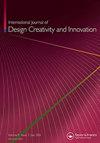分解:比较课堂式和模块式增材制造教育干预设计对学生设计师学习和创造力的影响
IF 2.5
Q4 ENGINEERING, MANUFACTURING
International Journal of Design Creativity and Innovation
Pub Date : 2023-07-31
DOI:10.1080/21650349.2023.2241049
引用次数: 0
摘要
本文章由计算机程序翻译,如有差异,请以英文原文为准。
Break it down: comparing the effects of lecture- and module-style design for additive manufacturing educational interventions on student designers’ learning and creativity
ABSTRACT The growing presence of additive manufacturing (AM) in engineering has resulted in a consequent need for AM and design for AM (DfAM) educational interventions in design. Several researchers have proposed AM and DfAM educational interventions; however, some argue that these efforts might not be sufficient to develop higher-level skills (e.g., leveraging AM capabilities for creative design). Prior work suggests that longer, spaced educational interventions are more effective in encouraging learning and information retention; however, these interventions could also be time-consuming and expensive to implement. Our aim in this research is to compare two variations of a DfAM educational intervention: (1) a module-style intervention spread over two sessions with the introduction of DfAM evaluation metrics, and (2) a lecture-style intervention completed in a single session with no evaluation metrics introduced. From our results, we see that students from the module-style intervention reported a greater increase in their DfAM self-efficacy and reported having given a greater emphasis on part consolidation and feature size. However, the structure of the educational intervention did not influence the creativity of ideas generated by the students. These findings highlight the utility of module-style DfAM educational interventions toward increasing DfAM self-efficacy, but not necessarily design creativity.
求助全文
通过发布文献求助,成功后即可免费获取论文全文。
去求助
来源期刊

International Journal of Design Creativity and Innovation
ENGINEERING, MANUFACTURING-
CiteScore
3.80
自引率
27.80%
发文量
15
期刊介绍:
The International Journal of Design Creativity and Innovation is an international publication that provides a forum for discussing the nature and potential of creativity and innovation in design from both theoretical and practical perspectives. Design creativity and innovation is truly an interdisciplinary academic research field that will interest and stimulate researchers of engineering design, industrial design, architecture, art, and similar areas. The journal aims to not only promote existing research disciplines but also pioneer a new one that lies in the intermediate area between the domains of systems engineering, information technology, computer science, social science, artificial intelligence, cognitive science, psychology, philosophy, linguistics, and related fields. The journal covers, but is not restricted to, the following topics: ·Theories on Design Creativity and Innovation ·Cognition of Design Creativity ·Innovative Process ·Inventive Process ·Analogical Reasoning for Design Creativity and Innovation ·Design Synthesis ·Method and Tools for Design Creativity and Innovation ·Representation of Design Creativity and Innovation ·Education for Design Creativity and Innovation ·Concept Generation and Inspiration.
 求助内容:
求助内容: 应助结果提醒方式:
应助结果提醒方式:


